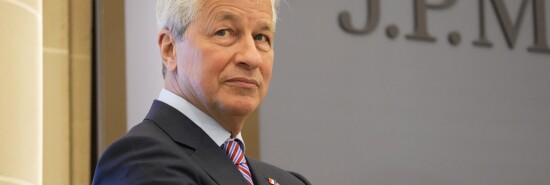
As in 2008, financial stability depends on Jamie Dimon bailing out big, bad banks
Tiana Lowe Doescher
Video Embed
The U.S. government has entrusted the same person to buy the remains of the second-largest bank failure in the nation’s history whom it also entrusted to oversee the first-largest. As was true in 2008 when Jamie Dimon was beckoned by Uncle Sam to shell out $1.9 billion for Washington Mutual, the JPMorgan Chase CEO is once again responsible for cleaning up the collapse of First Republic Bank.
History may not quite repeat itself, but it does rhyme. While Dimon says that the collapse of First Republic does not portend a graver risk of a recession, there’s little doubt that the federal government needs JPMorgan Chase to save it from itself.
Chief among the parallels here is that both with the Great Recession and the current credit crisis, Dimon predicted and prevented the obvious at his own banks. Dimon sold most of JPMorgan’s $12 billion of subprime loan operations in 2006 specifically due to the sharp rise in costs of credit default swaps, which were effectively insurance for the failures of subprime loans. JPMorgan’s resulting position, much more insulated from the housing collapse, resulted in the federal government begging the bank (at the time, only the third largest in the country) to acquire all but the most toxic assets of Bear Stearns and Washington Mutual.
Once again, JPMorgan hedged against rising interest rates throughout 2021, hoarding cash instead of purchasing the Treasurys that Silicon Valley Bank and First Republic stockpiled. The assumption that the Federal Reserve would not raise interest rates in response to the worst inflation in 40 years led the real value of SVB and FRB assets to plummet, and once more, the federal government has banked on Dimon to bail out depositors.
The primary culprit, after reckless investors who ran banks into the ground in the pursuit of endless growth, was the government itself, which stoked inflation to thrice the Fed’s maximum target with trillions of deficit spending despite economic growth. After the collapse of SVB, but before its acquisition of FRB, Dimon explained in further detail how the government stoked the flames of the crisis.
“Interest rate exposure, the fair value of held-to-maturity (HTM) portfolios and the amount of SVB’s uninsured deposits were always known — both to regulators and the marketplace. The unknown risk was that SVB’s over 35,000 corporate clients — and activity within them — were controlled by a small number of venture capital companies and moved their deposits in lockstep. It is unlikely that any recent change in regulatory requirements would have made a difference in what followed. Instead, the recent rapid rise of interest rates placed heightened focus on the potential for rapid deterioration of the fair value of HTM portfolios and, in this case, the lack of stickiness of certain uninsured deposits. Ironically, banks were incented to own very safe government securities because they were considered highly liquid by regulators and carried very low capital requirements. Even worse, the stress testing based on the scenario devised by the Federal Reserve Board (the Fed) never incorporated interest rates at higher levels. This is not to absolve bank management — it’s just to make clear that this wasn’t the finest hour for many players,” Dimon wrote last month.
Ironically enough, Dimon would later lament his decision to take on Washington Mutual and Bear Stearns. In a call to investors on Monday morning, Dimon struck a more optimistic note about the acquisition of FRB, calling it a “very clean bank.” Of course, the government once again chose JPMorgan Chase as the lucky buyer due to the bottom line: Thanks to the bank’s safe position and massive balance sheet, selling to JPMorgan Chase would incur the Federal Deposit Insurance Corporation the fewest costs.
The U.S. dollar at certain banks is no longer backed by the full faith and credit of the federal government, but rather by the one great hope of a single, private bank. We best believe that Dimon’s prognosis of bank stability is right, lest we have to learn what will happen if the day comes that JPMorgan Chase will not bail out the next big bank failure.
